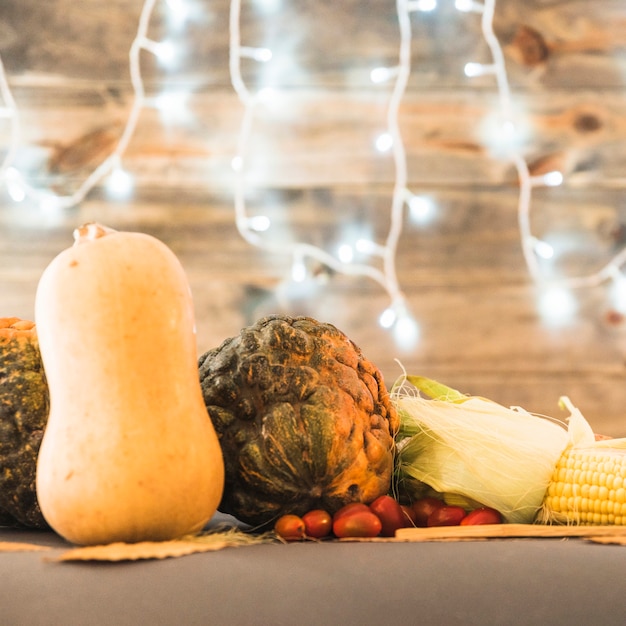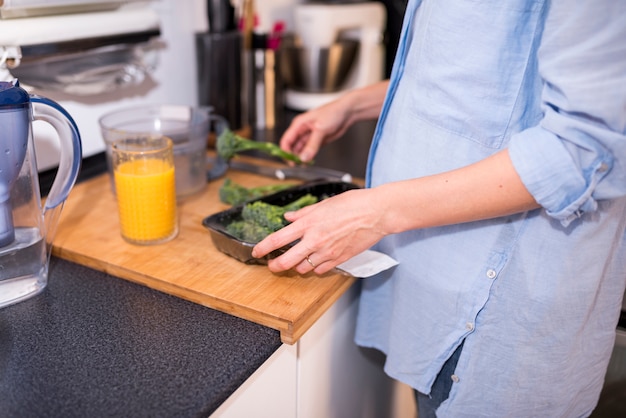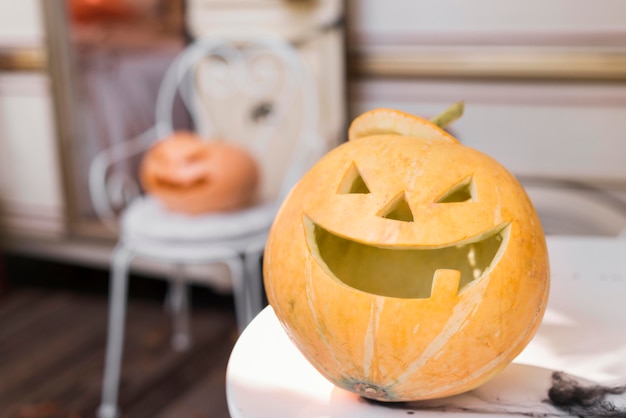Let's be honest, we all love a good roasted squash. That sweet, caramelized goodness is just irresistible. But sometimes, we get a little lost in the world of roasting, unsure how long to leave it in the oven, and ending up with either mushy, overcooked squash or a stubbornly raw interior. I've been there – those squash disasters are a painful memory! But over the years, I've learned some tricks to roasting the perfect squash, and I'm here to share them with you.
This is a comprehensive guide to roasting squash, from choosing the right variety to understanding the best baking times. You'll learn how to prep the squash, add flavor, and even discover how to store leftover squash for later use. Let's get started!
(Part 1) Choosing the Right Squash

Understanding Squash Varieties
We need to start with the foundation of our roasting adventure: choosing the right squash. Not all squash are created equal. Some have a delicate flavor best suited for steaming, while others are born for the oven. Let's explore the most popular options for roasting:
- butternut squash: This is the classic choice. It's known for its sweet, nutty flavor, a smooth, buttery texture, and versatility, perfect for savory dishes and sweet treats. It's often my go-to choice.
- acorn squash: With its beautiful acorn shape and rich, earthy flavor, acorn squash offers a firmer, denser texture that holds up well during roasting. Its vibrant appearance is a bonus too!
- spaghetti squash: This is a fun one! Its long, spaghetti-like strands are a delightful way to enjoy a pasta substitute. It's low in calories and a great source of fiber.
- kabocha squash: Known for its vibrant green skin and sweet, slightly nutty flavor, Kabocha squash roasts beautifully and holds its shape well.
- delicata squash: With its thin, edible skin, Delicata squash is a unique and flavorful option for roasting. Its sweet, delicate flavor pairs well with both savory and sweet ingredients.
Considering Size and Shape
Once you've chosen your squash variety, consider its size and shape. A smaller squash will generally cook faster than a larger one. The shape matters too. For a long, cylindrical squash like a butternut, you'll want to ensure even cuts for even cooking. Rounder squashes, like acorn squash, can often be roasted whole, simply cut in half.
(Part 2) Preparing Your Squash

Washing and Cutting
Before we hit the oven, it's time to prep our squash. First, give it a good wash under running water, scrubbing away any dirt or debris. Now, the cutting process: you have options! You can halve the squash lengthwise, or if it's smaller, cut it into wedges.
For larger squash like butternut, I recommend halving them lengthwise. This is where a sharp knife is your best friend, but be careful! One time, I sliced my finger trying to cut a stubborn butternut. My husband was not amused!
Removing the Seeds and Strings
Now, the fun part – removing the seeds. For butternut squash, use a spoon to scoop them out. Acorn squash seeds are easily pulled out by hand. And for spaghetti squash, you can simply scoop out the seeds after it's cooked.
Don't throw away those seeds! They're a tasty and nutritious snack. Roast them alongside the squash or use them later in salads or soups. After removing the seeds, scrape out any remaining strings. They can be quite fibrous and unpleasant to eat, so it's best to remove them. It's all about finding the right grip and using a little bit of force.
(Part 3) Roasting Your Squash

Choosing the Right Oven Temperature
Now, we're getting to the heart of the matter: roasting! Preheat your oven to the right temperature. I generally start with 400°F (200°C), but the ideal temperature can vary depending on the squash size and type. A good rule of thumb is to start with a higher temperature for the first part of the roasting process and then reduce it for the last part. This ensures even cooking and prevents the squash from burning on the outside while the inside is still raw.
Adding Flavor and Seasonings
Before your squash goes into the oven, let's add some flavor! There are endless possibilities, but here are some ideas to get you started:
- Simple & Savory: Drizzle with olive oil, add salt and pepper, and sprinkle with herbs like rosemary, thyme, or sage.
- Spicy Kick: Use spices like cumin, cinnamon, or nutmeg for a warm, earthy flavor.
- Sweet & Tangy: Add a touch of maple syrup or honey for a subtle sweetness that complements the squash's natural flavor.
- Citrus Burst: Use orange or lemon zest for a bright, citrusy flavor that adds a touch of zest.
- Nutty Delight: Sprinkle with chopped nuts like pecans or walnuts for a crunchy, nutty flavor.
You can also add chopped onions, garlic, or other vegetables to the baking dish for a more substantial dish. Let your culinary creativity run wild!
(Part 4) Estimating Baking Time
The Importance of Checking for Doneness
Now, the big question: how long do you roast your squash? It depends on the size, type of squash, oven temperature, and how you've cut it. But there are some general guidelines to follow. A small acorn squash might take 30-40 minutes, while a large butternut squash could need an hour or longer. The best way to know if your squash is done is to check it with a fork. It should be tender enough to pierce through easily.
Factors That Affect Baking Time
Here's a table to give you a starting point for different squash varieties:
| Squash Variety | Baking Time (approx.) |
|---|---|
| Butternut Squash (halved) | 45-60 minutes |
| Acorn Squash (halved) | 30-40 minutes |
| Spaghetti Squash (whole) | 45-60 minutes |
| Kabocha Squash (halved) | 45-60 minutes |
| Delicata Squash (halved) | 30-40 minutes |
Remember, these are just estimates. Your oven's temperature and the thickness of your squash can affect baking time. Always check for doneness with a fork!
(Part 5) Serving Your Roasted Squash
Versatile side dish or Main Course
Once your squash is roasted to perfection, get ready to enjoy! It can be a delicious side dish or a hearty main course. It's perfect for salads, soups, stews, and stir-fries. I love to serve it alongside roasted chicken or fish. Don't forget about desserts! Roasted squash shines in pies, cobblers, and cakes. You can even puree it and use it as a base for soups, sauces, or dips.
Storing Leftovers
Have leftover roasted squash? Store it in an airtight container in the refrigerator for up to 3 days. It's a fantastic way to have a healthy and delicious meal ready to go. You can also freeze roasted squash for up to 3 months. Defrost it in the refrigerator overnight before using it. Frozen squash tends to be a bit softer, so adjust the cooking time accordingly.
(Part 6) Tips for perfect roasting
The Importance of Moisture
Moisture is key to a perfectly roasted squash. If your squash starts to dry out, add a little water to the bottom of the baking dish. This will steam the squash and prevent it from becoming dry. You can also cover the squash with foil for the first part of the roasting process to trap moisture and prevent burning. Remove the foil during the last part of the roasting to allow the squash to brown and caramelize.
Roasting with a Skin-On Approach
Some prefer to roast squash with the skin on. While I'm not a fan, it does have its advantages. It helps retain moisture, and the skin peels off easily once the squash is cooked. If you go skin-on, pierce it with a fork a few times to release steam and prevent explosions in the oven (a painful experience I wouldn't wish on anyone!).
Using a Baking Dish
I find that baking dishes are the most convenient way to roast squash. They're easy to clean and allow for even cooking. Use a glass, ceramic, or metal baking dish, as long as it's oven-safe. If space is limited, you can roast directly on the oven rack. Line the rack with parchment paper to prevent sticking and flip the squash halfway through to ensure even cooking.
(Part 7) Squash-Based Recipes
To inspire your culinary creativity, here are a few delicious squash-based recipes:
Roasted Squash Salad with Feta and Walnuts
This salad is simple yet delightful for a light lunch or dinner. Roast butternut squash, toss it with crumbled feta cheese, chopped walnuts, and a tangy vinaigrette. It's a real crowd-pleaser.
squash soup with Ginger and Coconut Milk
For a creamy and comforting soup, roast butternut squash, blend it with ginger, coconut milk, and a touch of vegetable broth. It's warm and satisfying, perfect for a chilly day.
Squash and Apple Crumble
For a sweet treat, make a squash and apple crumble. It's delicious and comforting, perfect for a cozy evening. Combine roasted butternut squash, chopped apples, and a crumble topping made with oats, flour, brown sugar, and butter.
(Part 8) FAQs
Now, let's tackle those burning questions you might have about roasting squash.
1. Can I roast squash in the microwave?
While you technically can, it won't be as flavorful or tender as oven-roasted squash. The oven allows the squash to caramelize and develop a delicious depth of flavor. Stick to the oven for the best results!
2. Can I roast squash with the skin on?
Absolutely! It helps retain moisture, and the skin peels off easily once cooked. Just remember to pierce the skin with a fork to prevent it from exploding in the oven!
3. What can I do with leftover roasted squash?
Leftover roasted squash is a treasure! Use it in salads, soups, stews, stir-fries, pies, cobblers, cakes, or puree it for soups, sauces, and dips. Get creative and experiment!
4. How do I know when my squash is done?
The best way is to check with a fork. It should be tender enough to pierce through easily. If it's still firm, it needs more time in the oven.
5. What are the best ways to store leftover roasted squash?
Store it in an airtight container in the refrigerator for up to 3 days. You can also freeze it for up to 3 months. Defrost it in the refrigerator overnight before using it.
I hope this guide has equipped you with the knowledge and confidence to roast the perfect squash. Happy roasting!
Everyone is watching

Corn on the Cob: The Ultimate Guide to Perfectly Cooked Ears
Healthy MealsAh, corn on the cob. Just the name evokes images of sunny days, barbecues, and that sweet, juicy flavour that ...

Scallops: The Ultimate Guide to Perfect Cooking
Healthy MealsAh, scallops. Those delicate, sweet, and utterly delicious morsels of the sea. They hold a special place in my...

Spaghetti Squash: The Ultimate Guide to Cooking and Serving
Healthy MealsRemember that time you saw spaghetti squash at the supermarket, looking all bumpy and strange, and thought, "W...

Salmon Cooking Times: Perfect Guide for Every Recipe
Healthy MealsLet me tell you, cooking salmon is an art form. It's all about getting that perfect balance: juicy and tender,...

Ham Cooking Time: How Long to Bake, Smoke, or Boil a Delicious Ham
Healthy MealsAh, ham. It's a classic, isn't it? A real crowd-pleaser, especially around holidays. And when done right, it'...
